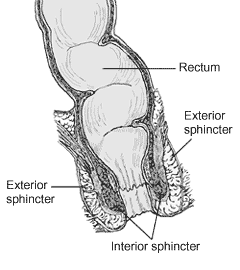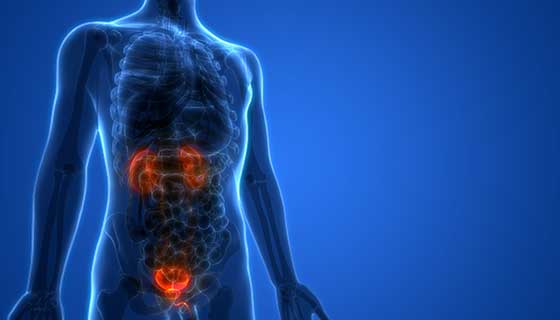Post COVID, supply chain outages are affecting every industry, even healthcare. Prior to COVID most health care administrators and physicians did not know the country of origin for most of the medical supplies they use. Many assumed they were made in the U.S. and did not know that supply chains for healthcare supplies are as complex and global as automotive supply chains.
Urodynamic Catheter Outages – Supply Issues can strike Healthcare Too
Topics: urodynamics catheters
Urodynamics is a set of tests and procedures that measure lower urinary tract function. These tests are prescribed by urologists, gynecologists, or urogynecologists, and the results from the tests allow them to look at how a patient's lower urinary tract is working. The bladder, sphincters, and urethra (all parts of the lower urinary tract) work together to hold and release urine. Most urodynamic tests are concerned with measuring the ability of your bladder to hold and drain urine completely.
Topics: Urodynamics Testing, urodynamics equipment, urodynamics training
How Do Doctors Diagnose Urinary Incontinence in Females?
Urinary incontinence affects an estimated 25 million Americans. Of these Americans, 75-80% are women.
Because there are many causes of female urinary incontinence, it takes careful consideration when recommending treatment.
Here, we discuss the different types of urinary incontinence in women and the best ways to diagnose the problem, including urodynamics.
Topics: urodynamic testing female, urodynamic test near me, urodynamic study procedure
Anorectal manometry is a medical procedure designed to measure whether the muscles—particularly the sphincter muscles—in the anus and rectum are functioning optimally.
Topics: anorectal manometry procedure, anorectal manometry test
What is Anorectal Manometry and Why is it Important?
What is an Anorectal Manometry Test?
An anorectal manometry test is a diagnostic procedure used to evaluate how well the rectum and anal sphincter work to eliminate stool. The end goal of anorectal manometry is treatment customized to address the specific problem. Treatments may include diet, medications, biofeedback, muscle strengthening exercises, or surgery.
Topics: anorectal manometry treatment, anorectal manometry procedure, anorectal manometry test
Everything You Need to Know About the Urinary Tract & How It works
The urinary tract is one of the most important systems in the human body. It is responsible for far more than the formation and transportation of urine. The urinary system affects everything in the body, from red blood cell formation to blood pressure regulation.
Topics: urodynamic testing male, urodynamic testing female, urodynamic test cost
Urodynamics is a panel of tests relating to the lower urinary tract. It is most commonly used in its entirety; however, it is also possible that one or more of the components will be performed separately if symptoms suggest this is necessary.
Urodynamics is the most reliable way to determine the cause of lower urinary tract symptoms and therefore, the best way to determine which treatment methods are most appropriate.
A Care Pathway is an evidenced-based framework to build a treatment plan upon, beginning with the primary physician, continuing to specialist referrals if necessary, and following the patient through to the end of their treatment (including follow-up care).
They typically follow a common path that starts with patient history, followed by clinical assessment, provisional diagnosis, first line management, specialist management, and follow-up care.
Some examples are listed here:
Topics: Urodynamics Testing, General Urology Information, urodynamics, urodynamics equipment, urodynamics staffing, urinariy incontinence, urodynamics interpretation, post-void residual, stress incontinence, urodynamics profitability, urodynamics catheters, UroGynecology, Cystometrogram
The Difference Between Urodynamics and Cystometrogram (CMG)
When it comes to conditions of the lower urinary tract, there are key differences to consider in order to determine which form of testing is the most appropriate. While there are striking similarities between methods that can potentially create confusion upon first glance, a practitioner knows which test is most appropriate for the corresponding symptoms.
One area that has the potential to create this confusion is determining the difference between the need for the broader Urodynamics testing panel or the Cystometrogram. While these two procedures involve many of the same elements, they are in fact different.
This post will provide a detailed comparison of the two methods and describe how they are similar, but also different. First, a brief explanation of the two methods before we compare:
Topics: Urodynamics Testing, BHN, outsourcing diagnostics, urodynamics, incontinence, urodynamics service provider, male urodynamics, stress incontinence, Uroflow, Uroflowmetry, UroGynecology, Cystometrogram
An aging US population brings unique challenges to urologists and the urology workforce in general. As the average age of the population increases, this means that the frequency of urologic diseases and need for urology-related treatments also increases, and it is having an effect on the industry in general as demand increases. These demographic changes in the United States are in turn changing the demands on the urology workforce, creating a need by professionals to have the latest data, research, education, and advocacy for a changing industry.
With the findings published in the American Urology Association’s 2020 census, along with comparisons with their previous publications, we can form a clear picture of what the urology workforce and industry has been through in the past, what it is currently dealing with as of the 2020 publication, and we can also infer educated predictions about the future to anticipate what urologists and urology professionals will need to prepare for in order to meet the growing demand for urology care.
Here is a summary of some of the key findings of the AUA’s 2020 census:
Topics: Urodynamics Testing, urodynamics, urodynamics staffing, incontinence, clinical operations, urology, urodynamics service provider, Medical Practice Operations, Uroflowmetry, UroGynecology
A Review of Nonsurgical and Nonpharmacological Urinary Incontinence Treatments
Urinary incontinence can provide health care professionals with a challenge that may seem like it requires surgery when there are in fact a range of nonsurgical and even non-pharmacological options that can be employed first. To experienced urologists, this will be apparent, however other healthcare professionals who do not have a full working knowledge of urodynamic testing along with urinary incontinence treatment options may choose surgery or medication when there are many steps that can be taken and explored before resorting to more invasive options.
An Overview of Urinary Incontinence
Topics: Urodynamics Testing, urodynamics, urinariy incontinence, incontinence, clinical operations, urology, urodynamics service provider, male urodynamics, UroGynecology











